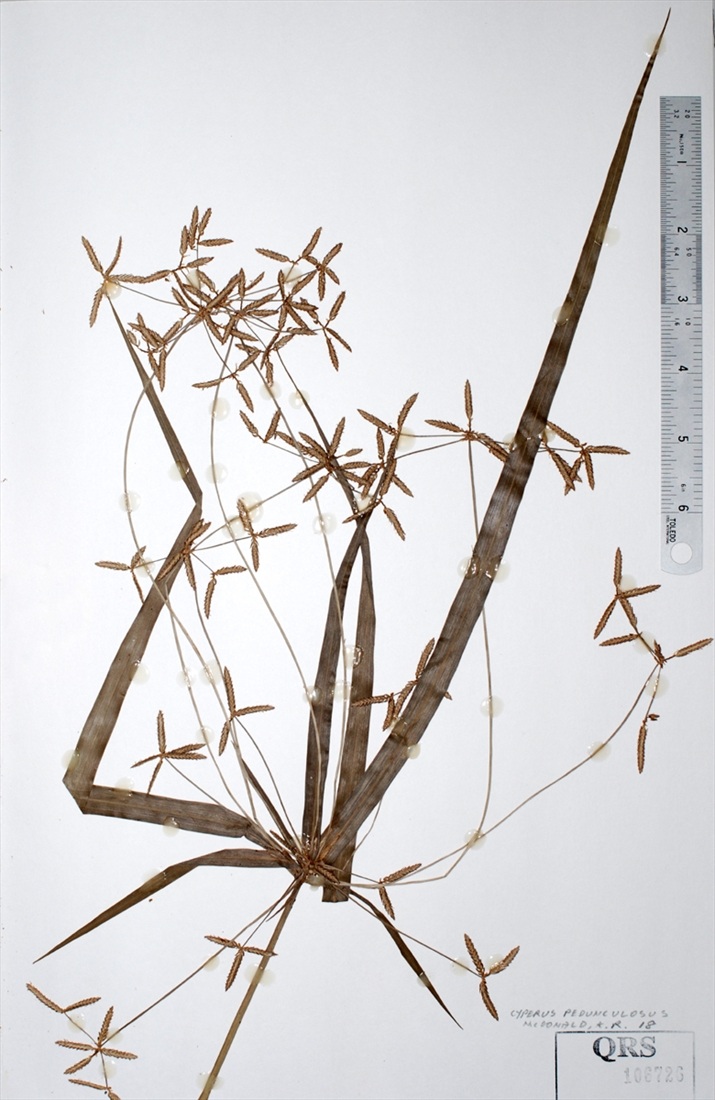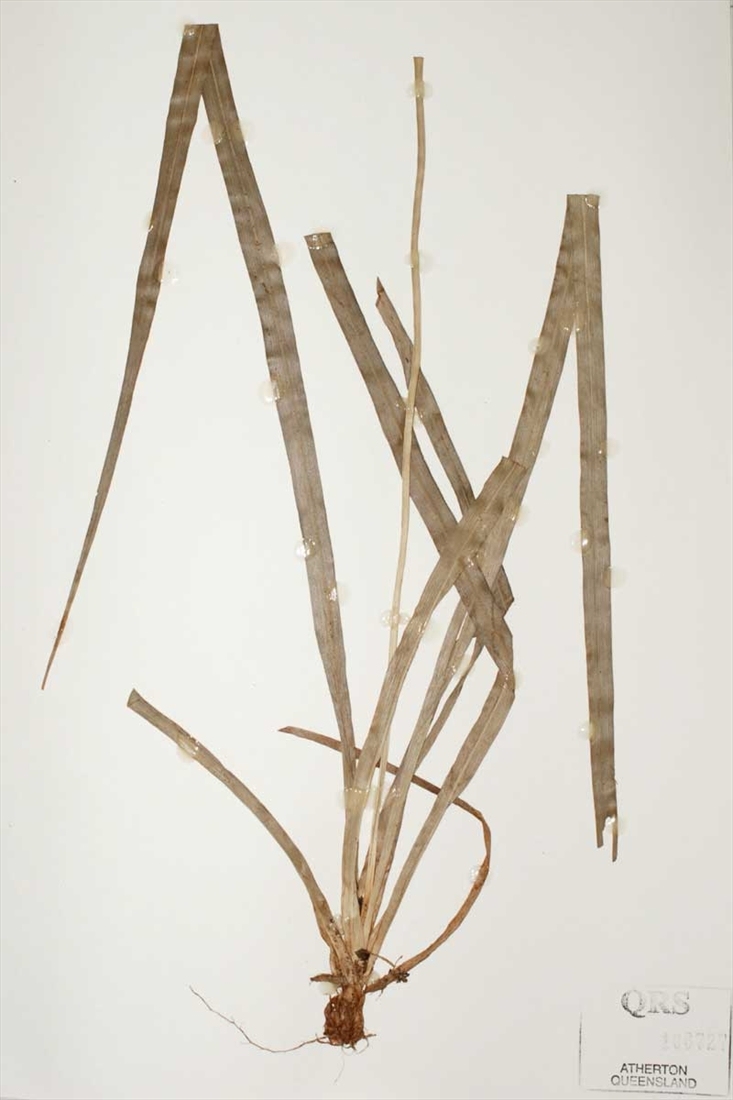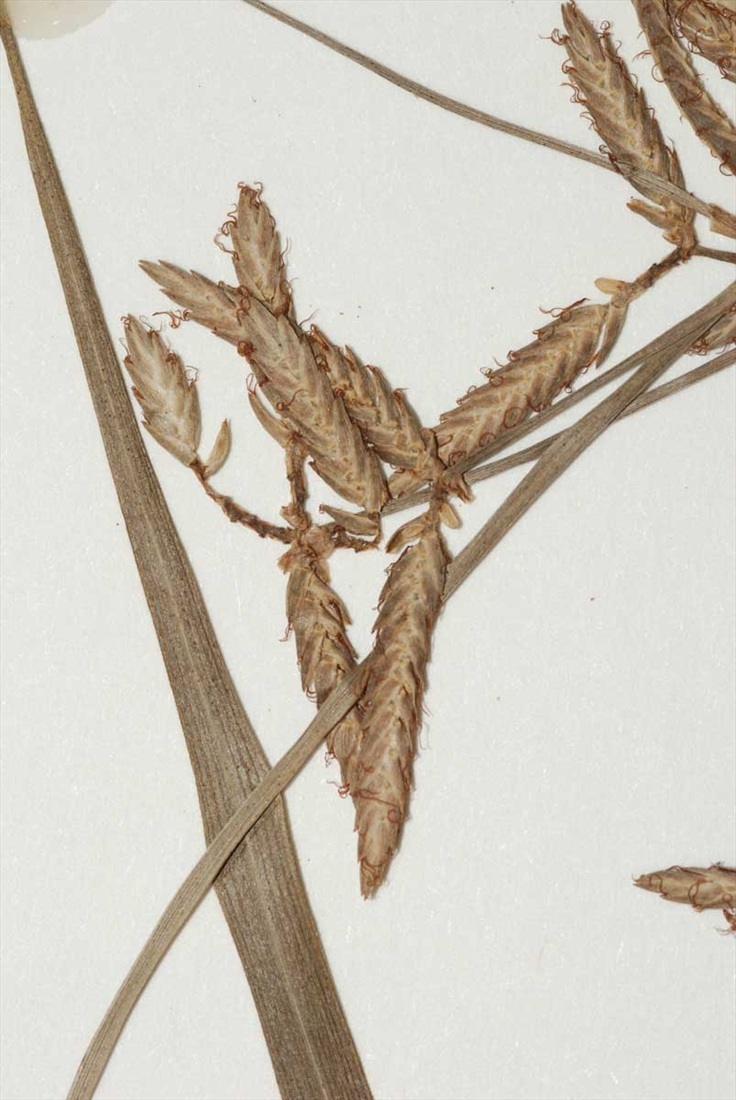Australian Tropical Rainforest Plants - Online edition
Cyperus pedunculosus F.Muell.



Mueller, F.J.H. von (1874) Fragmenta Phytographiae Australiae 8(65): 266. Type: Rockinghams Bay; Dallachy.
Perennial with very short rhizome. Stems tufted, triquetrous, sometimes destinctly 3-winged, 10-75 cm tall.
Leaves flat but canaliculate at the base, longer than the stems, scabrid on margins and nerves, with 3 prominent nerves, 6-20 mm wide. Culms erect, trquetrous to distinctly 3-winged, 25-45 cm long, 2-5 mm wide, thickened by inflated, scarious, purplish sheaths.
Inflorescence compound, loose, 10-20 cm long. Involucral bracts 5-6, 30-45 cm long, 6-15 mm wide, longer than inflorescence, scabrid. Spikes 6-12, 5-25 mm long, with 1-7 spikelets. Spikelets digitately arranged, compressed, 10-40(-50) -flowered. Glumes often dark reddish or red-brown, ovate to ovate-lanceolate, 2.6-3.5 mm long, incurved, 11-17 -nerved.
Features not available.





